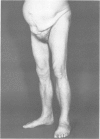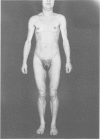Abstract
Familial lipodystrophy (referred to in publications as the Köbberling-Dunnigan syndrome) comprises at least two clinical phenotypes which are consistent within each pedigree. In type 1 familial lipodystrophy, loss of subcutaneous fat is confined to the limbs, sparing the face and trunk. In type 2 familial lipodystrophy, the trunk is also affected with the exception of the vulva, giving an appearance of labial hypertrophy. Diabetes mellitus, hyperlipoproteinaemia, and acanthosis nigricans are present to a variable degree in some but not all patients with familial lipodystrophy, and the abnormal distribution of subcutaneous fat is the essential hallmark of the syndrome. In addition to a survey of published reports, new cases with the syndrome are described. Both types of partial lipodystrophy, occurring either as familial disease or as sporadic cases, have only been observed in female patients. Study of the pedigrees of five families with familial lipodystrophy (two Scottish and three German) suggests an X linked dominant mode of transmission, lethal in the hemizygous (XY) state. The two clinical phenotypes with their variably expressive metabolic abnormalities are consistent either with different mutants of the same allele or with two genes on adjacent loci. Other clinical phenotypes of familial lipodystrophy may exist due to further mutations of the same allele or of genes on adjacent loci. The nature of the disorder in patients with familial lipodystrophy usually escapes recognition for many years and the syndrome is almost certainly much commoner than the few families described to date suggest.
Full text
PDF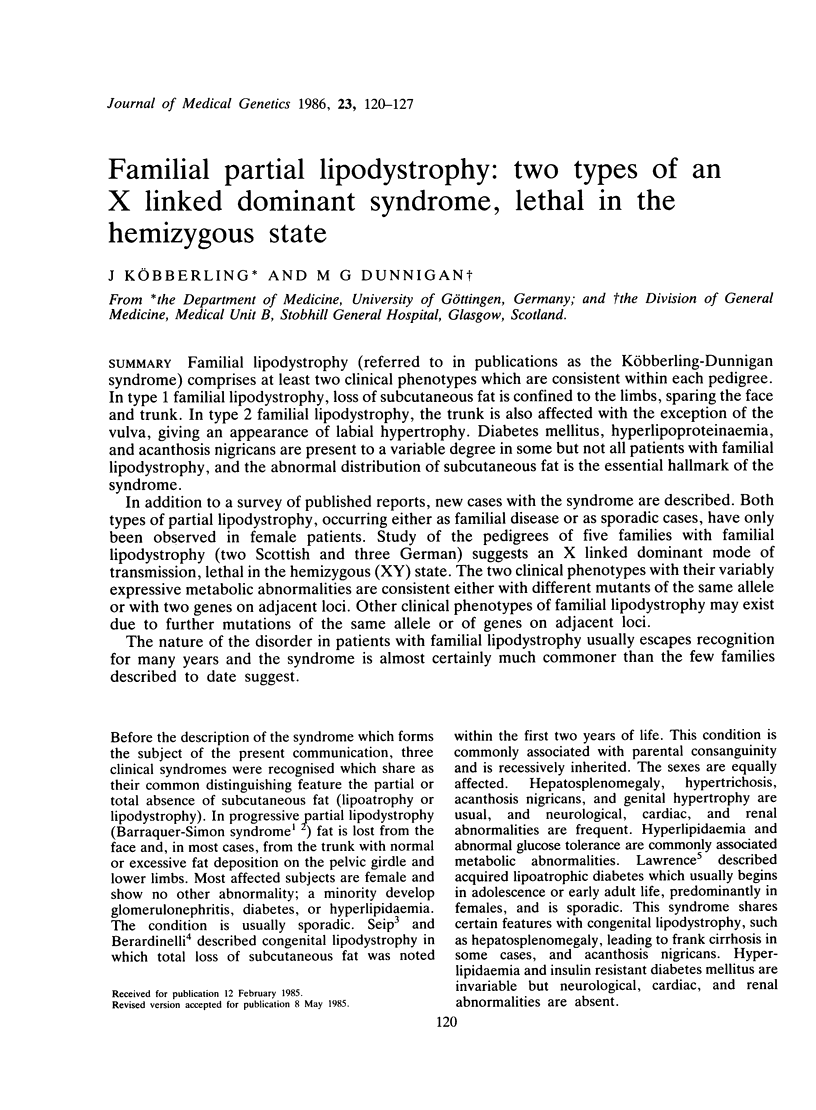
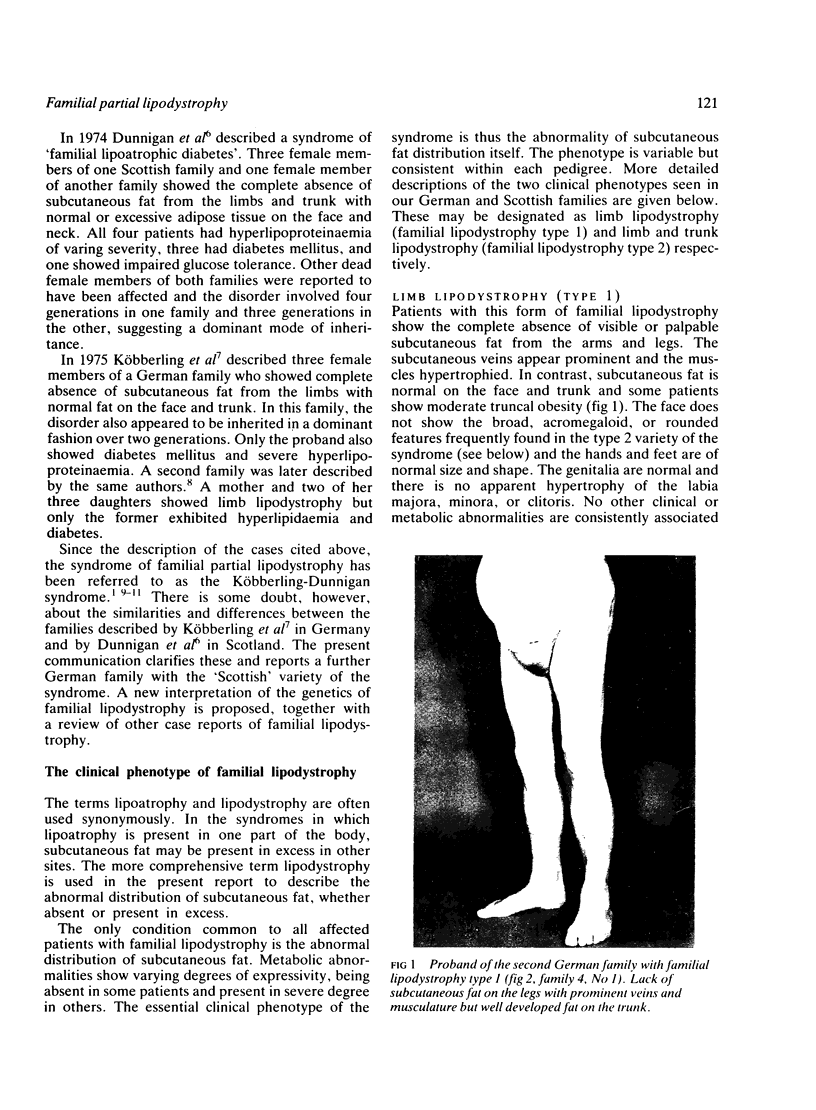
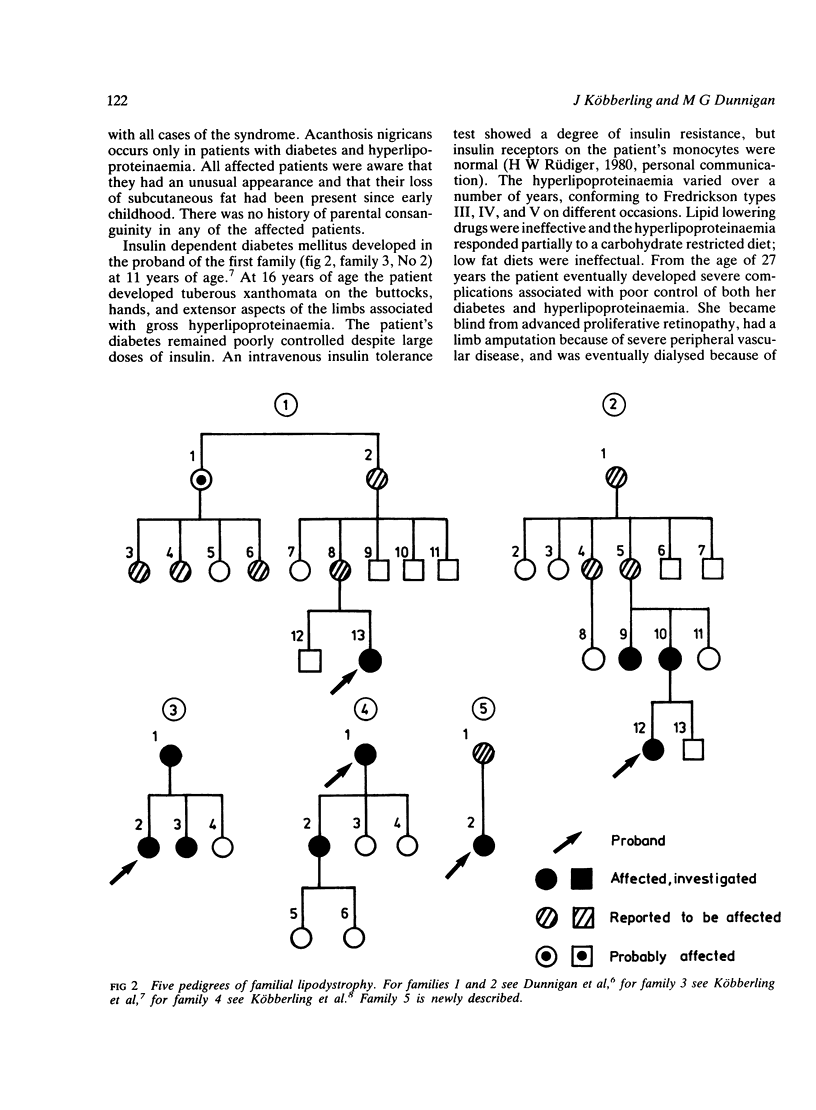
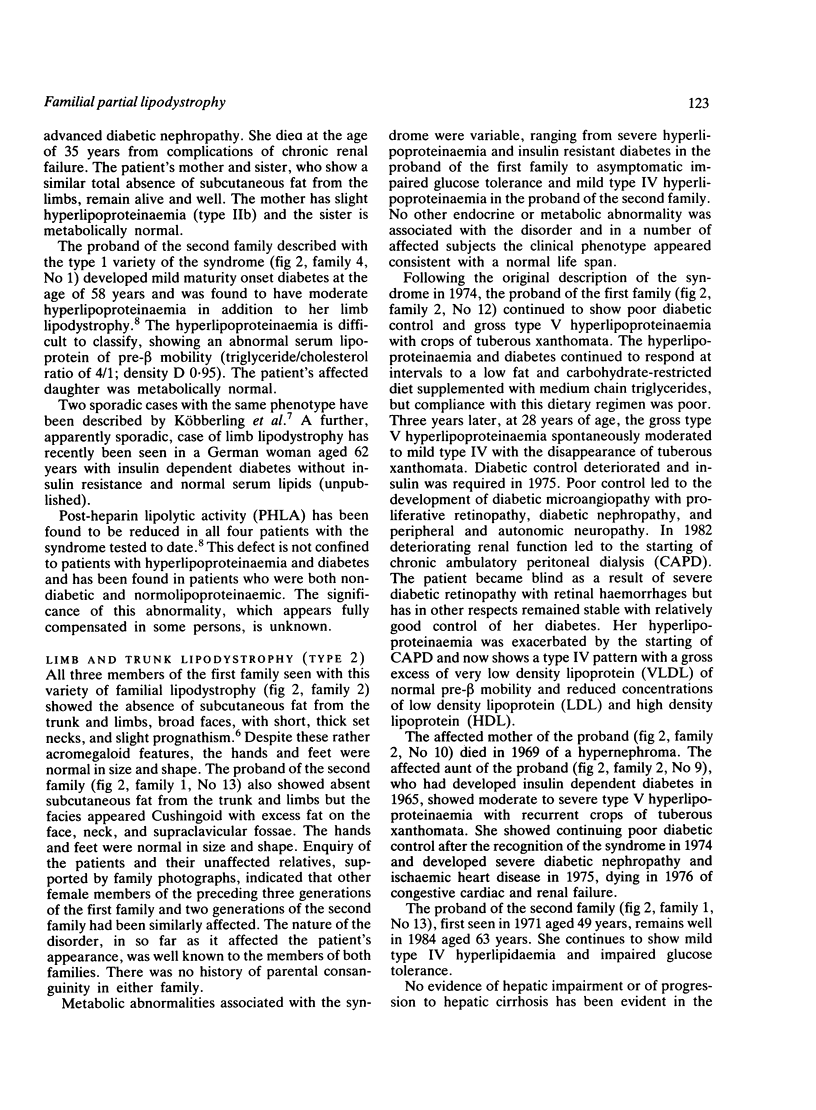
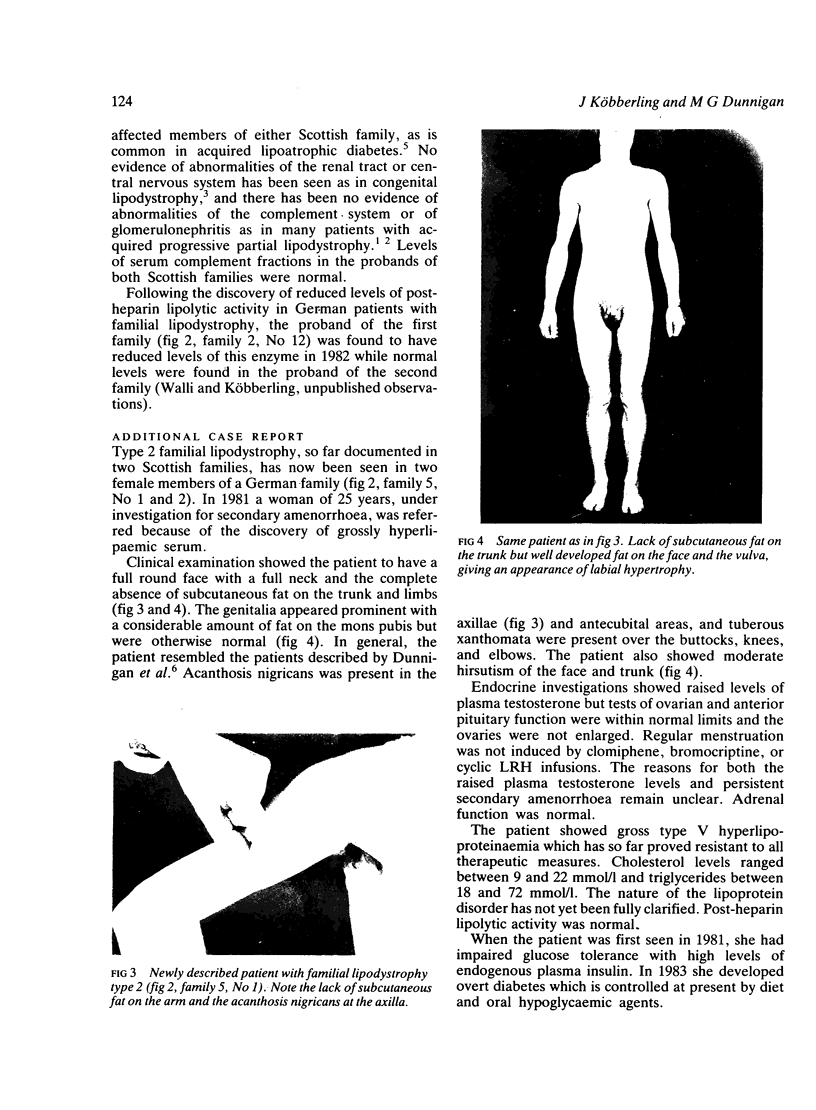
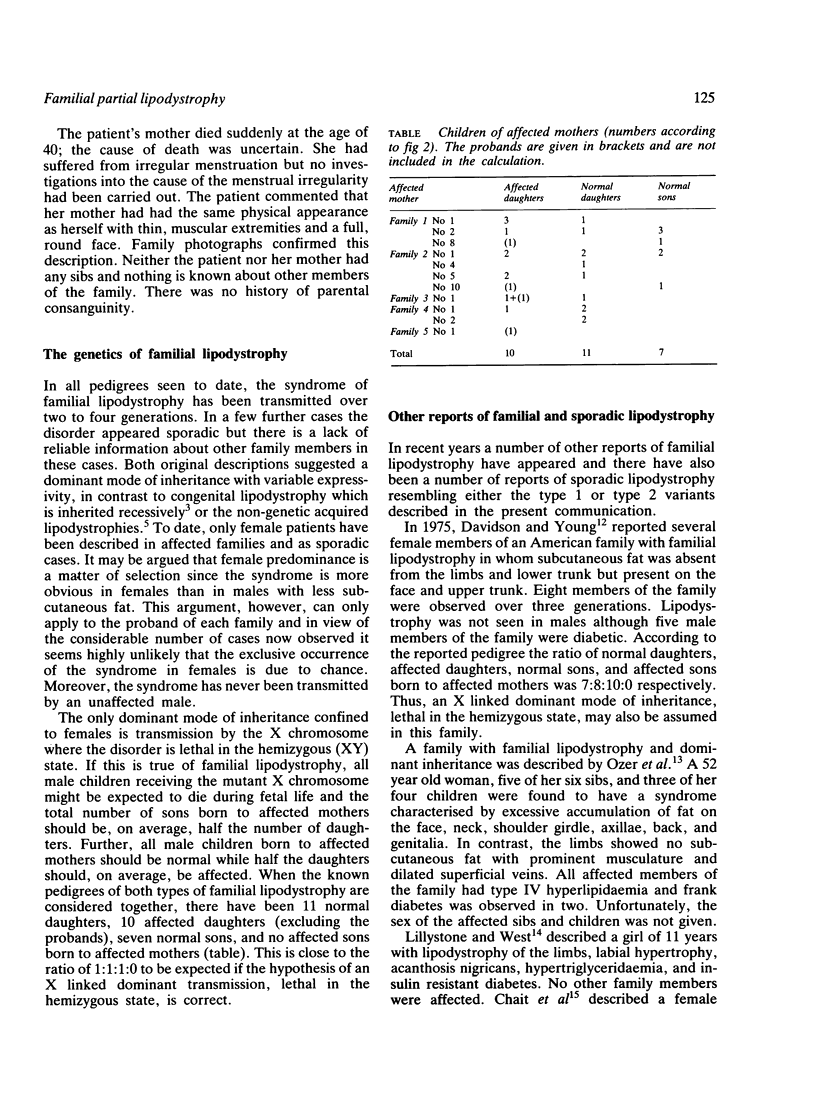
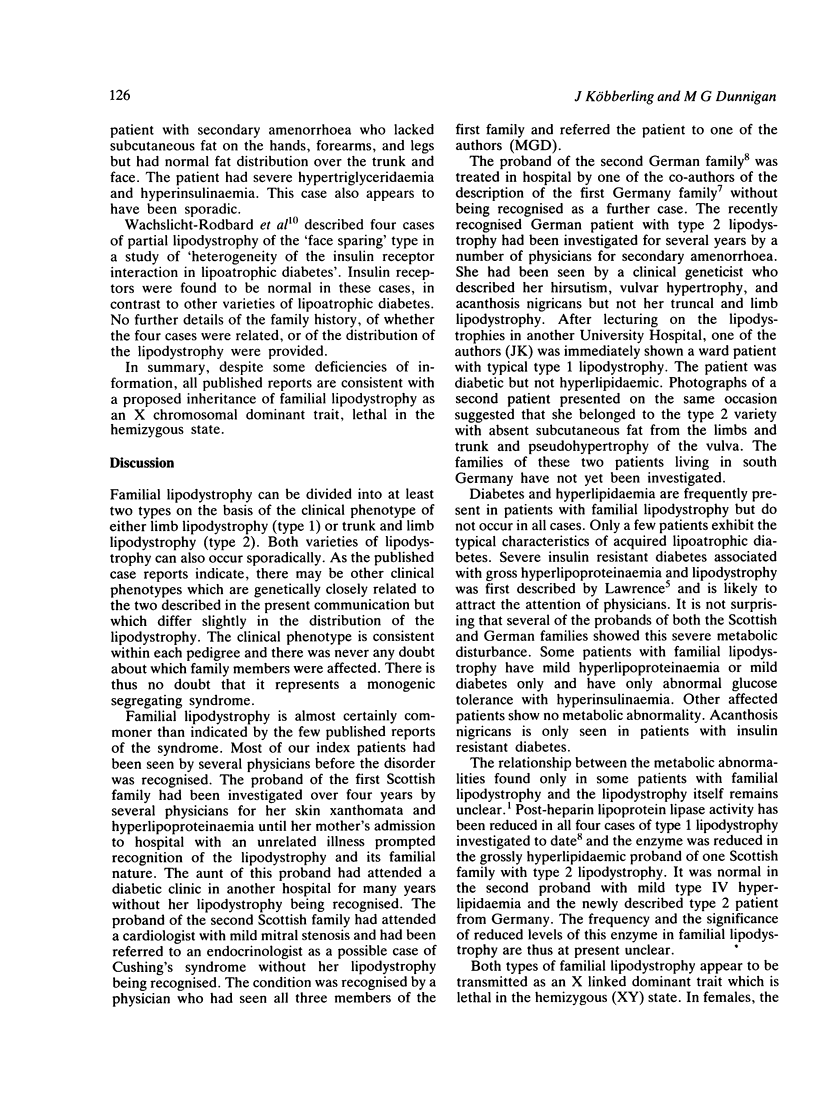
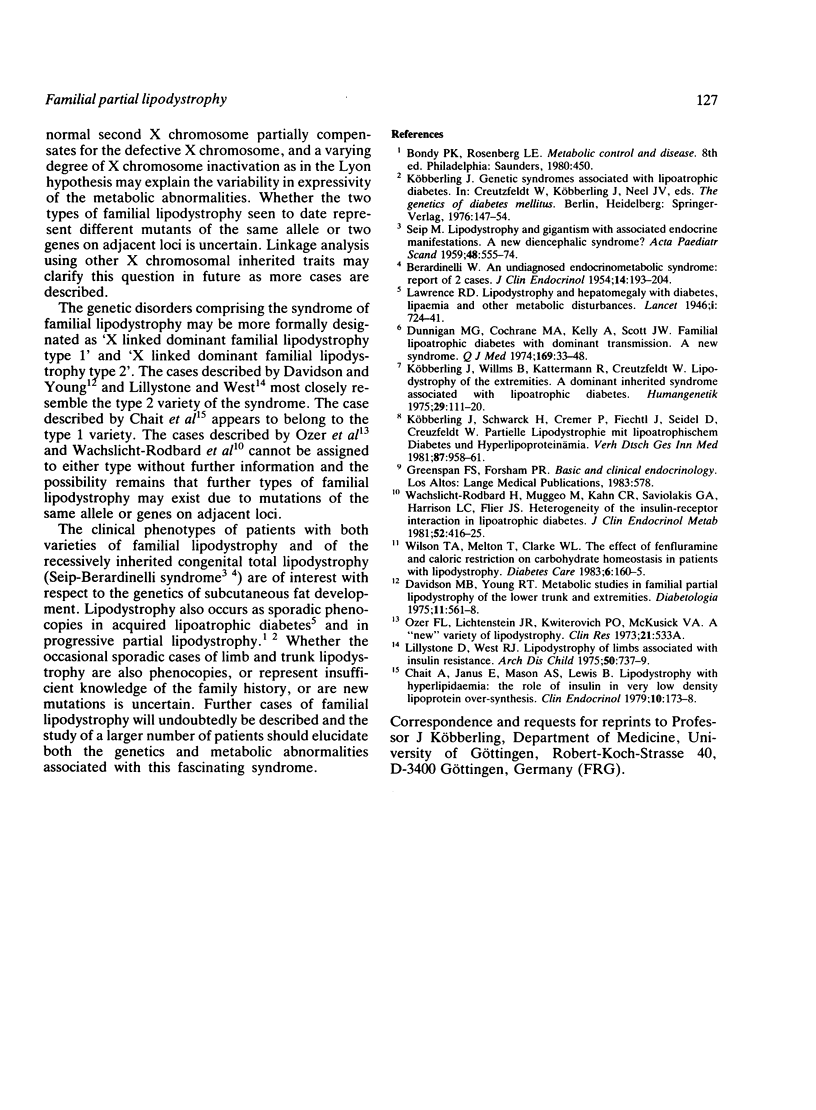
Images in this article
Selected References
These references are in PubMed. This may not be the complete list of references from this article.
- BERARDINELLI W. An undiagnosed endocrinometabolic syndrome: report of 2 cases. J Clin Endocrinol Metab. 1954 Feb;14(2):193–204. doi: 10.1210/jcem-14-2-193. [DOI] [PubMed] [Google Scholar]
- Chait A., Janus E., Mason A. S., Lewis B. Lipodystrophy with hyperlipidaemia: the role of insulin in very low density lipoprotein over-synthesis. Clin Endocrinol (Oxf) 1979 Feb;10(2):173–178. doi: 10.1111/j.1365-2265.1979.tb01363.x. [DOI] [PubMed] [Google Scholar]
- Davidson M. B., Young R. T. Metabolic studies in familial partial lipodystrophy of the lower trunk and extremities. Diabetologia. 1975 Dec;11(6):561–568. doi: 10.1007/BF01222107. [DOI] [PubMed] [Google Scholar]
- Dunnigan M. G., Cochrane M. A., Kelly A., Scott J. W. Familial lipoatrophic diabetes with dominant transmission. A new syndrome. Q J Med. 1974 Jan;43(169):33–48. [PubMed] [Google Scholar]
- Köbberling J., Willms B., Kattermann R., Creutzfeldt W. Lipodystrophy of the extremities. A dominantly inherited syndrome associated with lipatrophic diabetes. Humangenetik. 1975 Sep 10;29(2):111–120. doi: 10.1007/BF00430347. [DOI] [PubMed] [Google Scholar]
- Lillystone D., West R. J. Lipodystrophy of limbs associated with insulin resistance. Arch Dis Child. 1975 Sep;50(9):737–739. doi: 10.1136/adc.50.9.737. [DOI] [PMC free article] [PubMed] [Google Scholar]
- SEIP M. Lipodystrophy and gigantism with associated endocrine manifestations. A new diencephalic syndrome? Acta Paediatr. 1959 Nov;48:555–574. [PubMed] [Google Scholar]
- Wachslicht-Rodbard H., Muggeo M., Kahn C. R., Saviolakis G. A., Harrison L. C., Flier J. S. Heterogeneity of the insulin-receptor interaction in lipoatropic diabetes. J Clin Endocrinol Metab. 1981 Mar;52(3):416–425. doi: 10.1210/jcem-52-3-416. [DOI] [PubMed] [Google Scholar]
- Wilson T. A., Melton T., Clarke W. L. The effect of fenfluramine and caloric restriction on carbohydrate homeostasis in patients with lipodystrophy. Diabetes Care. 1983 Mar-Apr;6(2):160–165. doi: 10.2337/diacare.6.2.160. [DOI] [PubMed] [Google Scholar]



